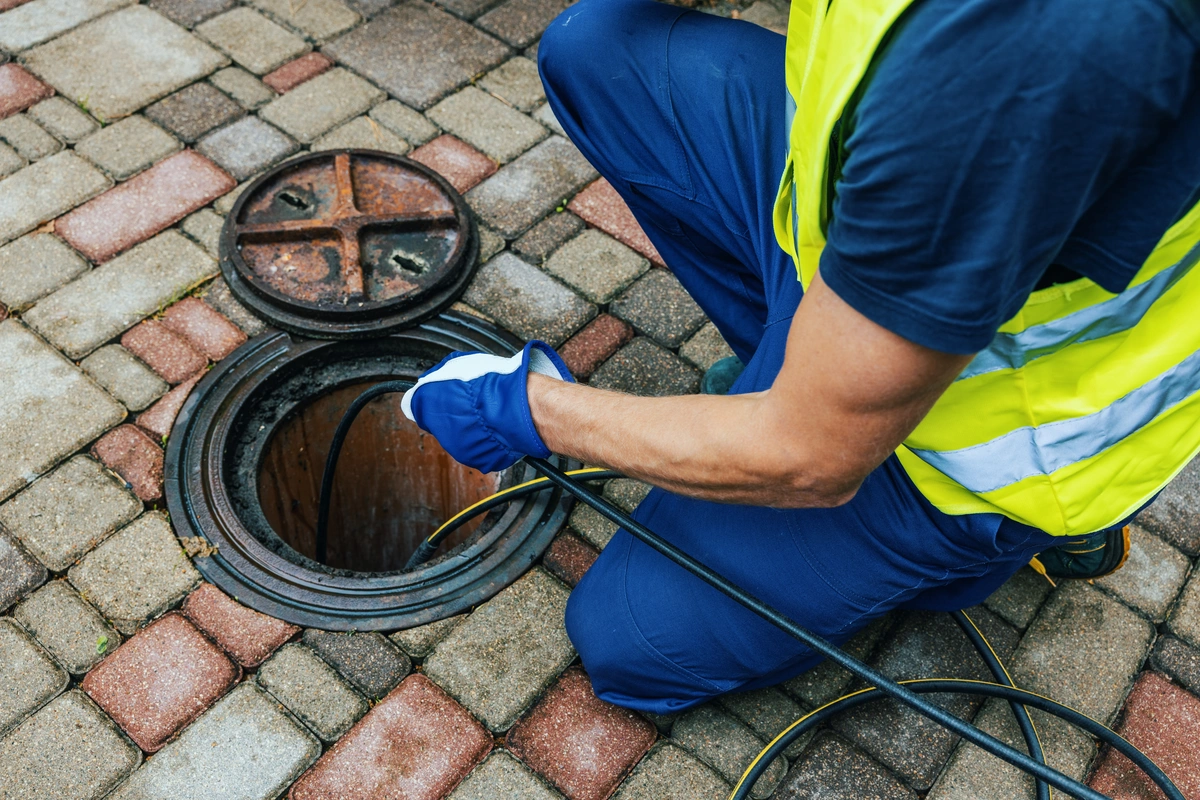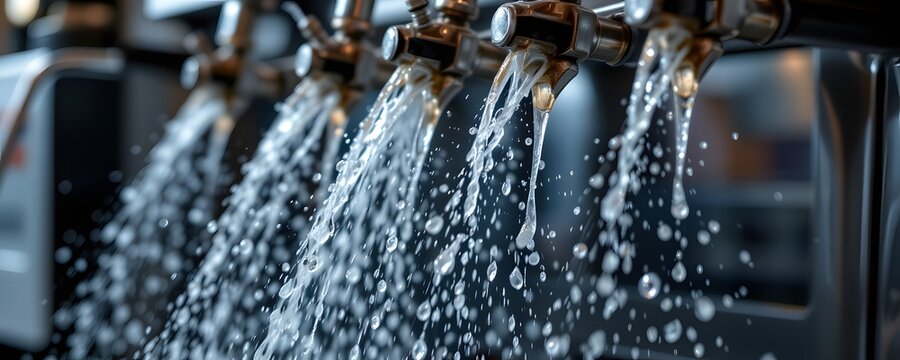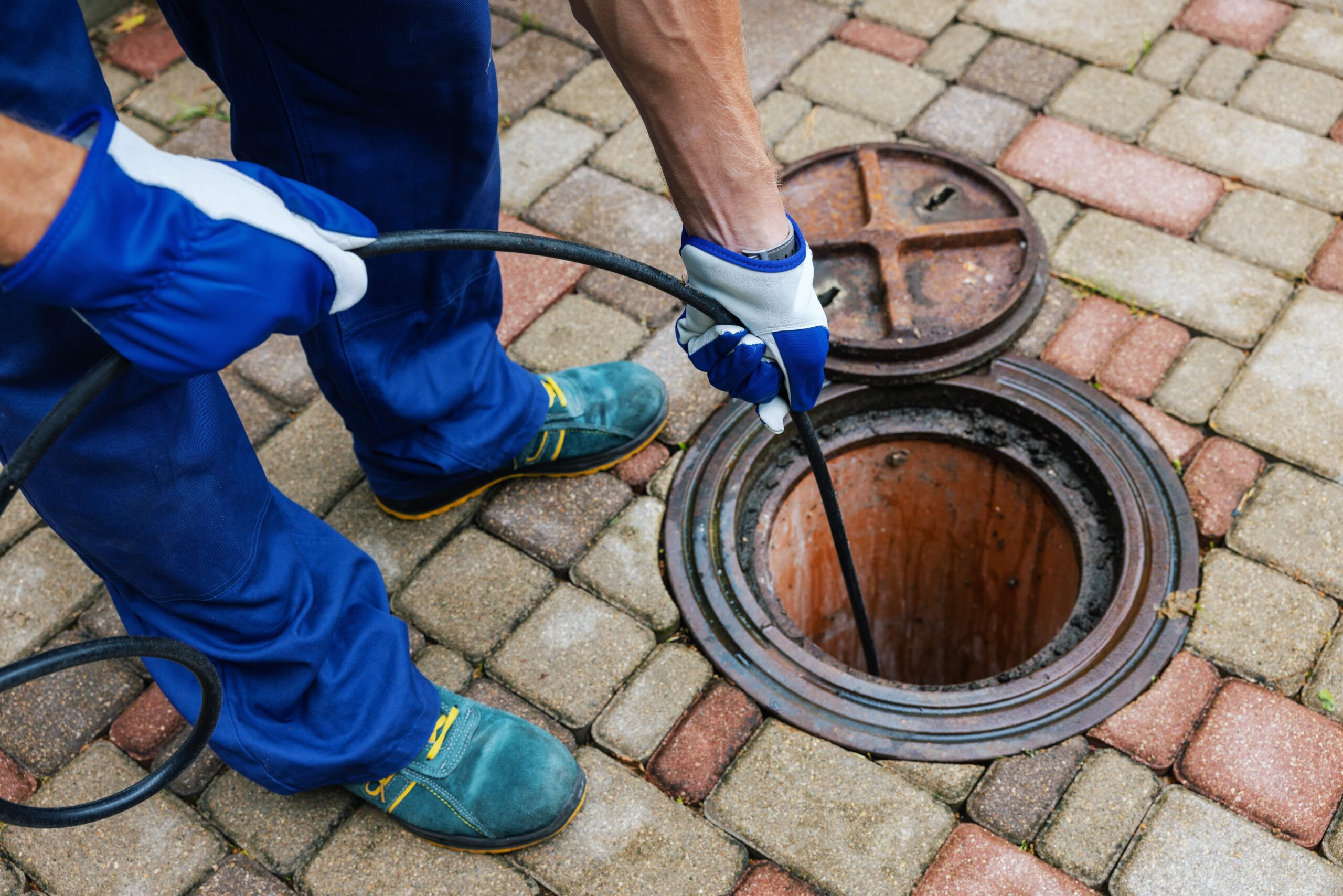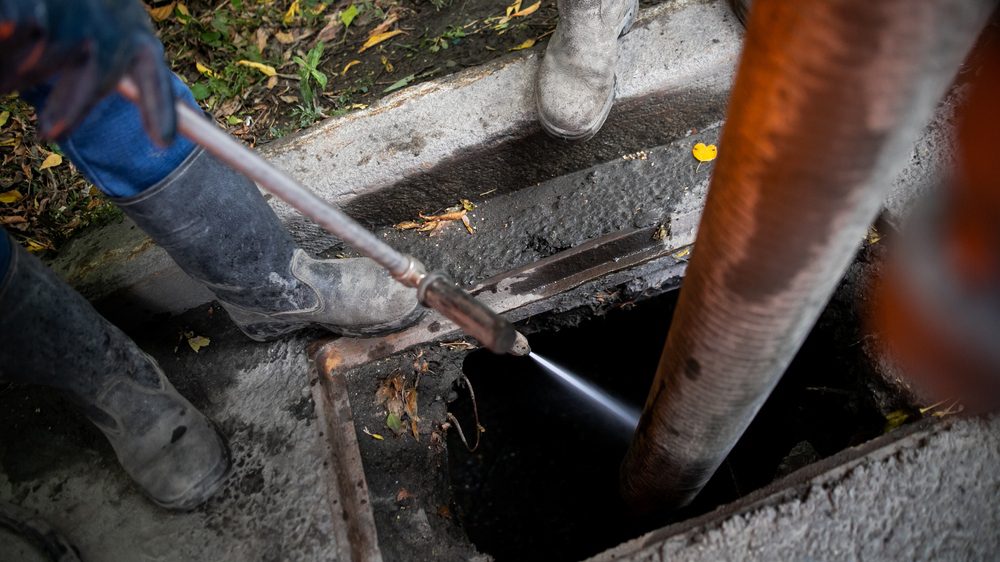- flomaxxinc@gmail.com
- 17035 Westview Ave South Holland Illinois 60473
Preventative Drain Maintenance: How Often Should You Schedule Hydro Jetting?

Your home’s plumbing system works tirelessly behind the scenes, carrying away waste and keeping your daily routines flowing smoothly. Yet most homeowners only think about their drains when something goes wrong—when water backs up, strange odors emerge, or costly emergency repairs become unavoidable. The truth is, waiting until problems surface often means dealing with expensive fixes that could have been prevented entirely.
Hydro jetting has emerged as one of the most effective preventative maintenance solutions for keeping drain systems in peak condition. This powerful cleaning method uses high-pressure water streams to thoroughly clear pipes, removing everything from grease buildup to tree root intrusions. But understanding how often to hydro jet drains remains a common question among property owners who want to protect their investment without overdoing maintenance expenses.
The answer isn’t one-size-fits-all. Your preventative hydro jetting maintenance schedule depends on several factors, including your property type, usage patterns, local water conditions, and the age of your plumbing system. This comprehensive guide explores everything you need to know about hydro jetting frequency for homeowners, helping you develop a maintenance strategy that prevents problems while maximizing your budget.
Understanding Hydro Jetting: More Than Just Drain Cleaning
Before diving into scheduling recommendations, it’s essential to grasp what hydro jetting actually accomplishes. Unlike traditional drain snaking or chemical cleaners that may only create temporary pathways through blockages, hydro jetting provides comprehensive pipe cleaning that addresses root causes of drainage problems.
The process involves inserting a specialized hose equipped with multiple spray nozzles into your drain system. These nozzles direct high-pressure water streams—typically ranging from 1,500 to 4,000 PSI—in all directions, effectively scouring pipe walls clean. This thorough approach removes accumulated grease, soap residue, mineral deposits, small tree roots, and other debris that gradually restricts water flow.
Professional hydro jetting equipment can navigate through complex pipe systems, cleaning both main sewer lines and smaller branch drains. The process not only clears existing blockages but also removes the sticky residue that attracts future buildup, essentially resetting your pipes to nearly new condition.

General Hydro Jetting Frequency Guidelines
Most plumbing professionals recommend the hydro jetting 1-2 years recommendation as a starting point for typical residential properties. This timeframe provides sufficient protection against major blockages while remaining cost-effective for most households. However, this baseline should be adjusted based on your specific circumstances.
Properties with minimal drainage stress—such as small households with newer plumbing systems and careful disposal habits—might extend intervals to every two to three years. Conversely, homes with heavy usage, older pipes, or challenging conditions may benefit from annual hydro jetting or even more frequent service.
The key lies in understanding that preventative maintenance costs significantly less than emergency repairs. A single severe blockage requiring emergency plumbing service, pipe excavation, or sewer line replacement can cost thousands of dollars—far exceeding the expense of regular hydro jetting maintenance.
Residential vs Commercial Hydro Jetting Intervals
The residential vs commercial hydro jetting intervals differ substantially due to usage intensity and regulatory requirements. Commercial properties typically require more frequent maintenance because of higher volume usage, diverse waste streams, and the critical nature of maintaining operations.
Residential Properties:
- Standard recommendation: Every 18-24 months
- High-usage homes: Every 12-18 months
- Low-usage properties: Every 2-3 years
- Properties with known issues: Every 6-12 months
Commercial Properties:
- Restaurants and food service: Every 3-6 months
- Office buildings: Every 6-12 months
- Retail establishments: Every 12-18 months
- Industrial facilities: Every 3-6 months (or as regulations require)
Commercial properties often face stricter regulations regarding waste disposal and drainage maintenance. Restaurants, for example, must manage grease accumulation that can quickly create serious blockages. Manufacturing facilities might deal with specialized waste products requiring more frequent attention.
Factors That Influence Your Hydro Jetting Schedule
Several variables affect how often you should schedule hydro jetting services. Understanding these factors helps you customize your maintenance approach for optimal results.
Household Size and Usage Patterns Larger families naturally put more stress on drainage systems. More showers, laundry loads, dishwashing, and general water usage means faster accumulation of soap residue, hair, and other debris. Homes with four or more occupants typically benefit from more frequent hydro jetting than smaller households.
Age and Condition of Plumbing Older plumbing systems often have rougher interior surfaces that catch debris more easily. Cast iron pipes, common in homes built before the 1970s, are particularly prone to corrosion and buildup. These systems usually require more frequent maintenance compared to modern PVC or copper installations.
Local Water Quality Hard water contains high mineral content that creates scale buildup inside pipes over time. This accumulation not only restricts water flow but also provides surfaces for other debris to collect. Homes in hard water areas often need more frequent hydro jetting to manage mineral deposits effectively.
Landscaping and Environmental Factors Properties with mature trees near sewer lines face increased risk of root intrusion. Tree roots naturally seek water sources and can penetrate even small cracks in pipes. Once inside, they grow rapidly and create major blockages. Homes with significant tree coverage typically require annual hydro jetting to manage root growth.
Disposal Habits Households that frequently dispose of grease, food scraps, or inappropriate items down drains will experience faster buildup. Even with garbage disposals, certain materials can accumulate in pipes and create blockages. Educating family members about proper disposal practices can extend time between hydro jetting services.

Signs You Need Hydro Jetting Soon
Recognizing early warning signs helps you schedule maintenance before minor issues become major problems. The signs you need hydro jetting soon often develop gradually, making them easy to overlook until they become severe.
Slow Drainage Throughout the Home When multiple drains start draining slowly simultaneously, it typically indicates main sewer line issues rather than individual fixture problems. This is often the first sign that your system needs professional attention.
Recurring Clogs If you find yourself frequently clearing the same drains with plungers or drain snakes, it suggests underlying buildup that surface treatments can’t address. Recurring clogs indicate that debris is accumulating faster than normal cleaning methods can manage.
Unusual Odors Persistent sewage odors coming from drains, especially in basements or near floor drains, often signal trapped organic matter decomposing in your pipes. These odors typically worsen over time and may indicate significant buildup requiring professional cleaning.
Water Backing Up Any instance of water backing up into fixtures, particularly in lower levels of your home, suggests serious blockages in main drain lines. This situation requires immediate attention to prevent sewage damage and health hazards.
Gurgling Sounds Strange noises from drains, especially when other fixtures are being used, indicate air displacement caused by partial blockages. These sounds often precede more serious drainage problems.
Multiple Fixture Problems When several plumbing fixtures experience issues simultaneously—such as the toilet gurgling when the washing machine drains—it typically points to main line problems that hydro jetting can effectively address.
Benefits of Scheduled Hydro Jetting
The benefits of scheduled hydro jetting extend far beyond simply preventing clogs. Regular maintenance provides comprehensive advantages that protect both your property and your budget.
Complete Pipe Cleaning Unlike temporary fixes that only create pathways through blockages, hydro jetting provides thorough cleaning that removes all accumulated debris. This comprehensive approach essentially resets your pipes to like-new condition, maximizing flow capacity and preventing quick re-accumulation of materials.
Root Prevention and Removal Regular hydro jetting effectively manages tree root intrusion before it becomes severe. The high-pressure water cuts through small roots and removes debris that might otherwise attract larger root growth. This preventative approach helps avoid costly excavation and pipe replacement.
Grease and Soap Buildup Elimination Kitchen and bathroom drains accumulate significant amounts of grease, soap residue, and organic matter over time. These materials create sticky surfaces that trap other debris, leading to progressive blockage development. Hydro jetting completely removes these accumulations, preventing the formation of solid blockages.
Improved Water Flow and Pressure Clean pipes allow water to flow freely, improving drainage speed and water pressure throughout your home. This enhancement is particularly noticeable in homes with older plumbing systems that have experienced years of gradual buildup.
Extended Plumbing System Lifespan Regular maintenance reduces stress on your entire plumbing system. When pipes can drain freely, there’s less pressure on joints, fixtures, and connections. This reduced stress helps prevent leaks and extends the overall lifespan of your plumbing infrastructure.
Cost Savings Over Time While regular hydro jetting represents an ongoing expense, it costs significantly less than emergency repairs, pipe replacement, or property damage from sewage backups. The investment in preventative maintenance typically pays for itself by avoiding major problems.
Health and Safety Benefits Clean drains reduce the risk of sewage backups that can create serious health hazards. Regular maintenance also eliminates odors and prevents the formation of environments where harmful bacteria might thrive.

Creating Your Personal Maintenance Schedule
Developing an effective maintenance schedule requires evaluating your specific situation against general guidelines. Start by considering the factors discussed earlier—household size, plumbing age, water quality, and environmental conditions.
For most homeowners, beginning with the standard hydro jetting 1-2 years recommendation provides a solid foundation. Monitor your system’s performance during this initial period, watching for any signs that might indicate the need for more frequent service.
Keep records of your maintenance activities, including dates of service, any issues discovered, and recommendations from your plumbing professional. This documentation helps you identify patterns and adjust your schedule for optimal results.
Consider seasonal factors when scheduling maintenance. Many homeowners find that spring cleaning provides an excellent opportunity for hydro jetting, addressing any accumulation from winter months before summer usage increases.
Working with Professional Plumbing Services
While understanding maintenance schedules is important, working with qualified professionals ensures you receive appropriate service for your specific needs. Experienced plumbing contractors can assess your system’s condition, identify potential problems, and recommend optimal maintenance intervals.
During professional assessments, technicians may use video inspection equipment to examine pipe interiors before and after hydro jetting. This technology provides valuable insight into your system’s condition and helps document the effectiveness of maintenance efforts.
Professional services also ensure that hydro jetting is performed safely and effectively. The high pressures involved require proper equipment and technique to avoid damage to pipes or fixtures. Qualified technicians understand how to adjust pressure levels for different pipe materials and conditions.
Conclusion
Preventative drain maintenance through regular hydro jetting represents one of the most effective investments you can make in your property’s plumbing system. While the standard recommendation of hydro jetting every 1-2 years provides a useful starting point, your optimal schedule depends on numerous factors specific to your situation.
By understanding the signs that indicate needed maintenance and recognizing the comprehensive benefits that scheduled hydro jetting provides, you can develop a maintenance strategy that protects your investment while minimizing unexpected expenses. Remember that the cost of preventative maintenance pales in comparison to emergency repairs, property damage, or complete system replacement.
Take time to evaluate your property’s specific needs, establish a realistic maintenance schedule, and work with qualified professionals who can provide expert guidance tailored to your situation. Your proactive approach to drain maintenance will pay dividends in system reliability, cost savings, and peace of mind for years to come.

